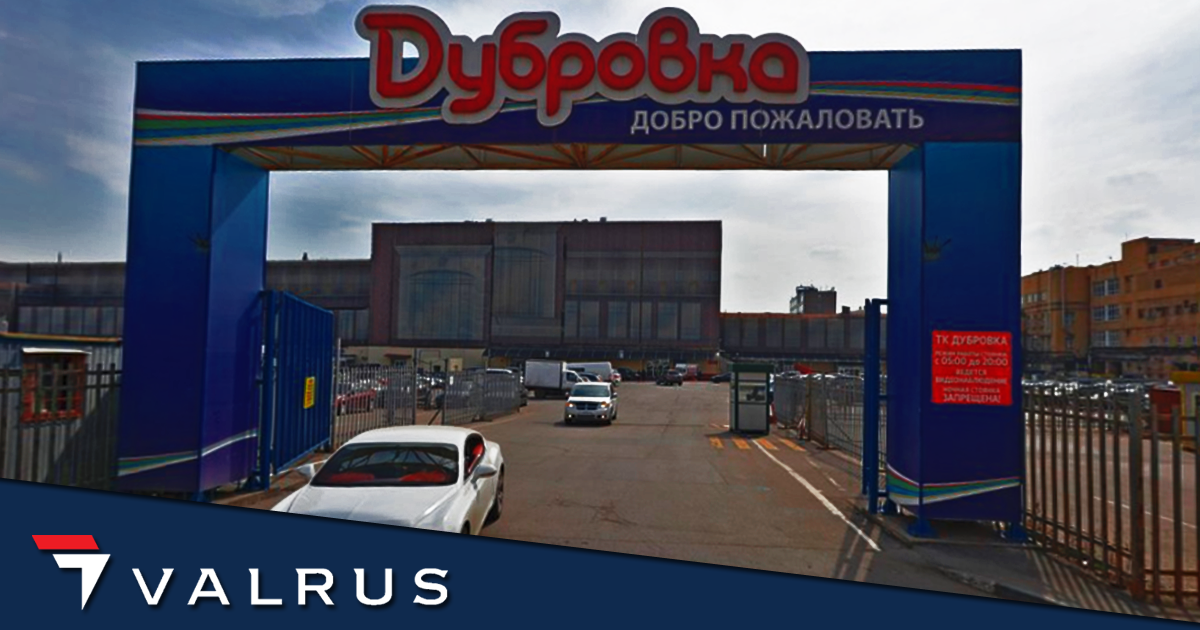In 2020, Valrus carried out work to determine the market value of a real estate complex located at 13 Sharikopodshipnikovaya str., Moscow. The complex consists of real estate objects for various purposes, including the former production buildings of the plant with a total area of more than 200 thousand square meters. m, located on land plots with an area of more than 30 hectares. The facility is the territory of a former factory "Moscow bearing" (GPZ-1).
The examination was complicated by the fact that the court raised the question of determining the market value of not the entire complex as a whole, but only two main ones – a land plot comprising 2/3 of the territory and the largest building.
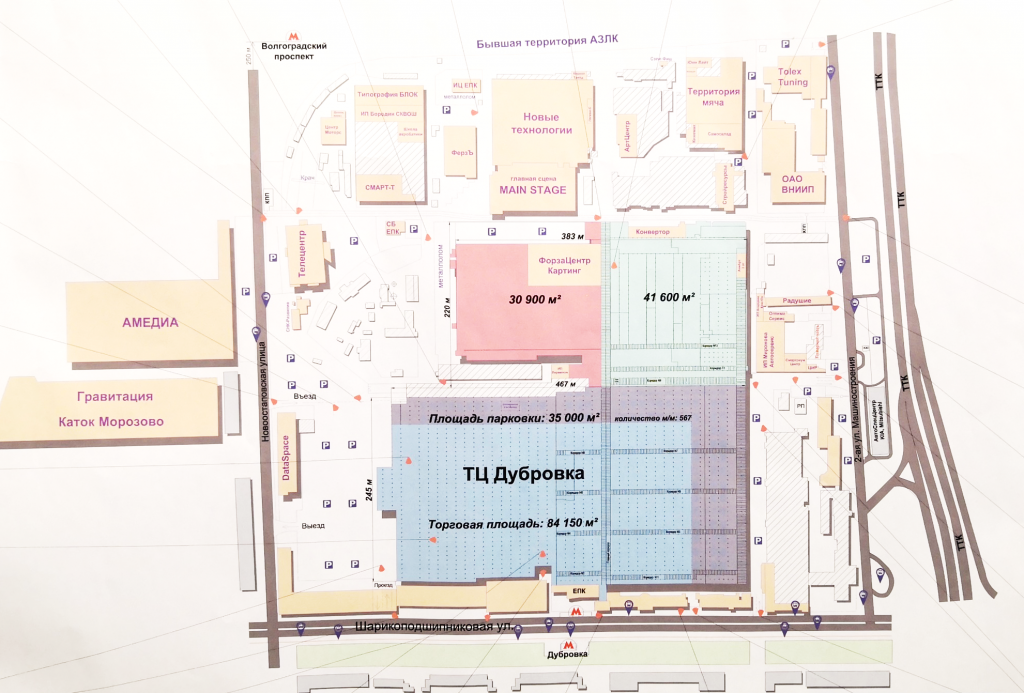
At the same time, the building was located partly on the valued site, and partly on the neighboring one. In addition to a part of the valued building, there were also about 40 other buildings on the land plot. The dates of the valuation of the land and the building were different. Determining separately the value of real estate objects that make up a single complex for different valuation dates and with fundamentally different functional uses significantly increases the complexity of the work.
According to the results of the inspection of the research objects, the Expert found that one of the capital construction facilities is only a part of the building of the plant's production complex, which after the inspection was repurposed for commercial use (part of the Dubrovka shopping complex, the clothing market). In addition, part of this capital construction facility is in disrepair and is not in operation.
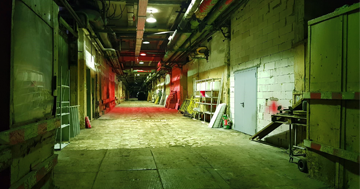
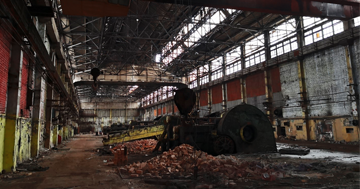
Other capital construction facilities located on the territory under consideration have a wide variety of functional significance – sports facilities, go-karts, industrial buildings, office buildings, entertainment clubs, etc.
In "old" part of Moscow, the territories of former industrial enterprises are still preserved, which are subject to full or partial renovation in accordance with the plan of the Moscow government. Redevelopment includes not only the use of these areas for urban planning, but also the change of the functionality of outdated production to innovative environmentally friendly or the location of scientific facilities. However, the Expert did not identify a single concept for the development of the territory of the former "Moskovsky Bearing" plant.
Having such diverse data, it was decided to value the land plot using a comparative approach using the sales comparison method and the balance method within the framework of a profitable approach minus the cost of improvements. Since the concept of demolishing all structures and the construction of a modern shopping center was not confirmed in the owner's plans, the general plan for the development of Moscow, as well as in terms of market expediency, the option of redevelopment of the territory into an art cluster was considered as part of the current work.
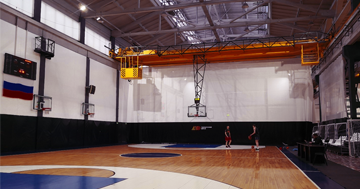
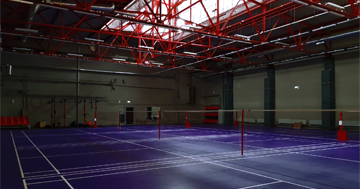
A cost-based approach was applied to the capital construction project to determine the market value of the emergency part of the building. To determine the market value of a single real estate object (a functioning and income-generating part of the building), we applied a profitable approach.
Within the framework of the profitable approach, three income flows were built: income from the rental of retail, office and industrial and warehouse premises. If there were no difficulties in identifying analogues for office and warehouse premises, then everything turned out to be not so clear with retail space.
The flea market is a small area of shopping pavilions, and large streets (lines) between them. Information on the rental rate for retail pavilions at flea markets is private and is usually provided at the request of a specific tenant. During the search process, it became clear to us that the bids have a large range and depend on many factors, for example, on the location of the pavilion (distance from the entrance). The rental rate for a well-located shopping pavilion may be 1.5-2 times higher than the average market rate. At the same time, pavilions on remote lines can be rented out quite cheaply. In addition, now anchor tenants are often put on the market, respectively, a couple of ads accidentally found on the Internet may not reflect the average rental level for the complex. It should be understood that the share of leasable space in the markets is significantly lower than in high-quality shopping malls. The leased area on the market includes no more than half of the total area of the building (due to the fine cutting of the pavilions and the need to leave space for the lines between the rows), therefore, it is the rental profit that is not so large and comparable to the profitability of class "C" shopping centers.
Ideas about the ultra-high profitability of clothing markets are no longer relevant in the current conditions. As a trading format, markets are leaving, the number of buyers for them is decreasing, and the contingent is below average in terms of income. The business around clothing markets can be quite profitable, but this is no longer related to rental income provided by real estate, precisely by business processes. Therefore, it is important to separate these components in real estate valuation.
The expert selected small retail premises located in flea markets and low-class shopping centers for analogues, taking into account the intricacies of pricing in the rental market. Thus, the leasable area was calculated in conformance with a sample of only retail space according to the explication data, without taking into account auxiliary areas, corridors, staircases, etc.

During this examination, the topic of rent pricing for retail pavilions in clothing markets was studied quite deeply and successfully applied for subsequent work.
The presented case is interesting because the spread of market value estimates for these objects available in the case materials, as well as for the challenge in the last round of cadastral valuation, was extremely wide.
In 2014 and 2016, the owners unsuccessfully tried to challenge the cadastral value through the Commission at the Federal Register and only after that went to court. As a result, in the valuation reports they submitted, the value of the property was estimated quite high, and within the framework of the forensic examination, on the basis of which the court made decisions, the value of the plaintiff was confirmed. In 2018, in the absence of a Commission, the plaintiff immediately went to court and submitted valuations at a cost 2 times lower than he had previously submitted.
It is obvious to market participants and professional valuers that a production building with an area of 162 thousand square meters, which has about 1/3 in disrepair (and cannot be used even for production and warehouse purposes in any way) cannot cost under 90 thousand rubles/sq.m. This valuation is at the level of an average modern shopping mall. The valuation of this capital construction facility, made by Valrus, at the level of 35 thousand rubles/sq.m, objectively reflects the actual characteristics of the facility and the market situation.
In our opinion, with the land plot, on the contrary, there was an underestimation before. The market value determined by the Valrus expert at the level of 35 thousand rubles/sq.m for a plot of 28 hectares with no obvious prospects for changing the type of permitted use corresponds to the price level in the Moscow city market. Only with the continued use of existing buildings, even taking into account their conversion from a production function to a commercial activity, but not a specialized shopping center, but for sports and entertainment and exhibition.
When considering the examination, of course, the issues of deviations from previous valuations and the results of the challenge were among the most important. The administration of the City of Moscow, represented by the Department of Property and the State Budgetary Institution, submitted relevant objections. However, the professional position of the expert and the detailed explanations provided by him allowed the court to understand the situation. As a result, the court decided to establish the cadastral value of the objects based on the results of the examination of the company Valrus. By the decision of the First Court of Appeal of General Jurisdiction, the decision of the Moscow City Court was left unchanged.
At the same time, in the Decision on the case, the Court of Appeal noted the following important point from the point of view of the principles of valuation and methodology:
The choice of the valuation method, contrary to the statement in the appeals, belongs to the valuer (expert), who, unlike the directly interested parties, are left with the choice of valuation methods, as well as a decisive judgment on their viability, compatibility and preference of some over others.
... When choosing the approaches used in the valuation, it is necessary to take into account not only the possibility of applying each of the approaches, but also the goals and objectives of the valuation, the intended use of the valuation results, assumptions, completeness and reliability of the initial information. Based on the analysis of these factors, the choice of approaches used by the valuer is justified.

